Cannabis Constituents and Acetylcholinesterase Interaction: Molecular Docking, In Vitro Studies and Association with CNR1 rs806368 and ACHE rs17228602
Abstract
1. Introduction
2. Materials and Methods
2.1. Molecular Docking
2.2. LogP Determination
2.3. Acetylcholinesterase Activity in Human Blood
2.3.1. Sampling of Study Subjects
2.3.2. Biochemical Measurement of AChE
2.4. Primer Designing and Chemicals
2.5. Genomic DNA Extraction and SNP Genotyping
2.6. Statistical Analysis
3. Results
3.1. Docking Analysis
3.2. LogP Determination
3.3. AChE Activity in Addicted and Non-Addicted Cohort
3.4. Association Analysis of CNR1 rs806368 and ACHE rs17228602
4. Discussion
5. Conclusions
Author Contributions
Funding
Acknowledgments
Conflicts of Interest
References
- ElSohly, M.A.; Radwan, M.M.; Gul, W.; Chandra, S.; Galal, A. Phytochemistry of Cannabis sativa L. Prog. Chem. Org. Nat. Prod. 2017, 103, 1–36. [Google Scholar] [CrossRef]
- Burggren, A.C.; Shirazi, A.; Ginder, N.; London, E.D. Cannabis effects on brain structure, function, and cognition: Considerations for medical uses of cannabis and its derivatives. Am. J. Drug Alcohol Abus. 2019, 45, 563–579. [Google Scholar] [CrossRef]
- Di Marzo, V. New approaches and challenges to targeting the endocannabinoid system. Nat. Rev. Drug Discov. 2018, 17, 623–639. [Google Scholar] [CrossRef]
- Kokkevi, A.; Gabhainn, S.N.; Spyropoulou, M. Early Initiation of Cannabis Use: A Cross-national European Perspective. J. Adolesc. Health 2006, 39, 712–719. [Google Scholar] [CrossRef]
- Russo, E.B.; Marcu, J. Cannabis Pharmacology: The Usual Suspects and a Few Promising Leads. Adv. Pharmacol. 2017, 80, 67–134. [Google Scholar] [CrossRef] [PubMed]
- Maroon, J.; Bost, J. Review of the neurological benefits of phytocannabinoids. Surg. Neurol. Int. 2018, 9, 91. [Google Scholar] [CrossRef] [PubMed]
- Pertwee, R.G. The therapeutic potential of drugs that target cannabinoid receptors or modulate the tissue levels or actions of endocannabinoids. AAPS J. 2005, 7, E625–E654. [Google Scholar] [CrossRef] [PubMed]
- Vallée, A.; Lecarpentier, Y.; Guillevin, R.; Vallée, J.-N. Effects of cannabidiol interactions with Wnt/β-catenin pathway and PPARγ on oxidative stress and neuroinflammation in Alzheimer’s disease. Acta Biochim. Biophys. Sin. 2017, 49, 853–866. [Google Scholar] [CrossRef]
- Watt, G.; Karl, T. In vivo Evidence for Therapeutic Properties of Cannabidiol (CBD) for Alzheimer’s Disease. Front. Pharmacol. 2017, 8, 20. [Google Scholar] [CrossRef]
- Calabrese, E.J.; Rubio-Casillas, A. Biphasic effects of THC in memory and cognition. Eur. J. Clin. Invest. 2018, 48, e12920. [Google Scholar] [CrossRef]
- Green, B.; Kavanagh, D.; Young, R. Being stoned: A review of self-reported cannabis effects. Drug Alcohol Rev. 2003, 22, 453–460. [Google Scholar] [CrossRef] [PubMed]
- Mineur, Y.S.; Obayemi, A.; Wigestrand, M.B.; Fote, G.M.; Calarco, C.A.; Li, A.M.; Picciotto, M.R. Cholinergic signaling in the hippocampus regulates social stress resilience and anxiety- and depression-like behavior. Proc. Natl. Acad. Sci. USA 2013, 110, 3573–3578. [Google Scholar] [CrossRef] [PubMed]
- Brady, K.T.; Gray, K.M.; Tolliver, B.K. Cognitive enhancers in the treatment of substance use disorders: Clinical evidence. Pharmacol. Biochem. Behav. 2011, 99, 285–294. [Google Scholar] [CrossRef] [PubMed]
- Terranova, J.-P.; Storme, J.-J.; Lafon, N.; Pério, A.; Rinaldi-Carmona, M.; Le Fur, G.; Soubrié, P. Improvement of memory in rodents by the selective CB1 cannabinoid receptor antagonist, SR 141716. Psychopharmacology 1996, 126, 165–172. [Google Scholar] [CrossRef]
- Revuelta, A.V.; Cheney, D.L.; Costa, E.; Lander, N.; Mechoulam, R. Reduction of hippocampal acetylcholine turnover in rats treated with (−)-delta 8-tetrahydrocannabinol and its 1′,2′-dimethyl-heptyl homolog. Brain Res. 1980, 195, 445–452. [Google Scholar] [CrossRef]
- Pacher, P.; Bátkai, S.; Kunos, G. The endocannabinoid system as an emerging target of pharmacotherapy. Pharmacol. Rev. 2006, 58, 389–462. [Google Scholar] [CrossRef]
- Coutselinis, A.; Michalodimitrakis, M. Acetylcholinesterase Activity after Hashish Smoking. Clin. Toxicol. 1981, 18, 385–387. [Google Scholar] [CrossRef]
- Abdel-Salam, O.M.E.; Youness, E.R.; Khadrawy, Y.A.; Sleem, A.A. Acetylcholinesterase, butyrylcholinesterase and paraoxonase 1 activities in rats treated with cannabis, tramadol or both. Asian Pac. J. Trop. Med. 2016, 9, 1089–1094. [Google Scholar] [CrossRef]
- Moss, D.E.; Peck, P.L.; Salome, R. Tetrahydrocannabinol and acetylcholinesterase. Pharmacol. Biochem. Behav. 1978, 8, 763–765. [Google Scholar] [CrossRef]
- Kim, S.H.; Yang, J.W.; Kim, K.H.; Kim, J.U.; Yook, T.H. A Review on Studies of Marijuana for Alzheimer’s Disease – Focusing on CBD, THC. J. Pharmacopunct. 2019, 22, 225–230. [Google Scholar] [CrossRef]
- Corley, R.P.; Zeiger, J.S.; Crowley, T.; Ehringer, M.A.; Hewitt, J.K.; Hopfer, C.J.; Lessem, J.; McQueen, M.B.; Rhee, S.H.; Smolen, A.; et al. Association of candidate genes with antisocial drug dependence in adolescents. Drug Alcohol Depend. 2008, 96, 90–98. [Google Scholar] [CrossRef] [PubMed]
- Zuo, L.; Kranzler, H.R.; Luo, X.; Covault, J.; Gelernter, J. CNR1 Variation Modulates Risk for Drug and Alcohol Dependence. Biol. Psychiatry 2007, 62, 616–626. [Google Scholar] [CrossRef] [PubMed]
- Peiró, A.M.; García-Gutiérrez, M.S.; Planelles, B.; Femenía, T.; Mingote, C.; Jiménez-Treviño, L.; Martínez-Barrondo, S.; García-Portilla, M.P.; Saiz, P.A.; Bobes, J.; et al. Association of cannabinoid receptor genes (CNR1 and CNR2) polymorphisms and panic disorder. Anxiety Stress Coping 2020, 33, 256–265. [Google Scholar] [CrossRef]
- Chen, X.; Williamson, V.S.; An, S.-S.; Hettema, J.M.; Aggen, S.H.; Neale, M.C.; Kendler, K.S. Cannabinoid Receptor 1 Gene Association with Nicotine Dependence. Arch. Gen. Psychiatry 2008, 65, 816–823. [Google Scholar] [CrossRef] [PubMed][Green Version]
- Javed, T.; Habib, R.; Ghafoor, S.; Rumman, B.; Awan, S.; Ntepe, L.J.M.; Batool, S.; Nurulain, S.M. Association of status of acetylcholinesterase and ACHE gene 3′ UTR variants (rs17228602, rs17228616) with drug addiction vulnerability in pakistani population. Chem. Biol. Interact. 2019, 308, 130–136. [Google Scholar] [CrossRef] [PubMed]
- Waqar, M.; Batool, S. In silico analysis of binding of neurotoxic venom ligands with acetylcholinesterase for therapeutic use in treatment of Alzheimer’s disease. J. Theor. Biol. 2015, 372, 107–117. [Google Scholar] [CrossRef] [PubMed]
- Berman, H.M.; Westbrook, J.; Feng, Z.; Gilliland, G.; Bhat, T.N.; Weissig, H.; Shindyalov, I.N.; Bourne, P.E. The Protein Data Bank. Nucleic Acids Res. 2000, 28, 235–242. [Google Scholar] [CrossRef]
- Pettersen, E.F.; Goddard, T.D.; Huang, C.C.; Couch, G.S.; Greenblatt, D.M.; Meng, E.C.; Ferrin, T.E. UCSF Chimera—A visualization system for exploratory research and analysis. J. Comput. Chem. 2004, 25, 1605–1612. [Google Scholar] [CrossRef]
- Khazanov, N.A.; Carlson, H.A. Exploring the Composition of Protein-Ligand Binding Sites on a Large Scale. PLoS Comput. Biol. 2013, 9. [Google Scholar] [CrossRef]
- Kim, S.; Chen, J.; Cheng, T.; Gindulyte, A.; He, J.; He, S.; Li, Q.; Shoemaker, B.A.; Thiessen, P.A.; Yu, B.; et al. PubChem 2019 update: Improved access to chemical data. Nucleic Acids Res. 2019, 47, D1102–D1109. [Google Scholar] [CrossRef]
- Pence, H.E.; Williams, A. ChemSpider: An Online Chemical Information Resource. J. Chem. Educ. 2010, 87, 1123–1124. [Google Scholar] [CrossRef]
- Dallakyan, S.; Olson, A.J. Small-Molecule Library Screening by Docking with PyRx. In Chemical Biology: Methods and Protocols; Hempel, J.E., Williams, C.H., Hong, C.C., Eds.; Springer: New York, NY, USA, 2015; pp. 243–250. ISBN 978-1-4939-2269-7. [Google Scholar]
- Darvas, F.; Marokházti, S.; Kormos, P.; Gururaj, K.; Kalász, H.; Papp, Á. MetabolExpert: Its Use in Metabolism Research and in Combinatorial Chemistry. In Drug Metabolism; Erhardt, P.W., Ed.; Blackwell Science: Oxford, UK, 1999; pp. 237–270. [Google Scholar]
- Worek, F.; Mast, U.; Kiderlen, D.; Diepold, C.; Eyer, P. Improved determination of acetylcholinesterase activity in human whole blood. Clin. Chim. Acta Int. J. Clin. Chem. 1999, 288, 73–90. [Google Scholar] [CrossRef]
- Lahiri, D.K.; Nurnberger, J.I. A rapid non-enzymatic method for the preparation of HMW DNA from blood for RFLP studies. Nucleic Acids Res. 1991, 19, 5444. [Google Scholar] [CrossRef] [PubMed]
- Wright, C.I.; Sabine, J.C. The Inactivation of Cholinesterase by Morphine, Dilaudid, Codeine and Desomorphine. J. Pharmacol. Exp. Ther. 1943, 78, 375–385. [Google Scholar] [CrossRef]
- Suarez-Lopez, J.R.; Hood, N.; Suárez-Torres, J.; Gahagan, S.; Gunnar, M.R.; López-Paredes, D. Associations of acetylcholinesterase activity with depression and anxiety symptoms among adolescents growing up near pesticide spray sites. Int. J. Hyg. Environ. Health 2019, 222, 81–990. [Google Scholar] [CrossRef]
- Fritze, J.; Beckmann, H. Erythrocyte acetylcholinesterase in psychiatric disorders and controls. Biol. Psychiatry 1987, 22, 1097–1106. [Google Scholar] [CrossRef]
- Kim, K.; Yao, J.; Jin, Z.; Zheng, F.; Zhan, C.-G. Kinetic characterization of cholinesterases and a therapeutically valuable cocaine hydrolase for their catalytic activities against heroin and its metabolite 6-monoacetylmorphine. Chem. Biol. Interact. 2018, 293, 107–114. [Google Scholar] [CrossRef]
- Sim, M.K.; Chua, M.E. Inhibition of acetylcholinesterase by various opioids. Clin. Exp. Pharmacol. Physiol. 1986, 13, 159–162. [Google Scholar] [CrossRef]
- Eubanks, L.M.; Rogers, C.J.; Beuscher, A.E., IV; Koob, G.F.; Olson, A.J.; Dickerson, T.J.; Janda, K.D. A Molecular Link between the Active Component of Marijuana and Alzheimer’s Disease Pathology. Mol. Pharm. 2006, 3, 773. [Google Scholar] [CrossRef]
- Yoshimura, H.; Fujiwara, M.; Ueki, S. Biochemical correlates in mouse-killing behavior of the rat: brain acetylcholine and acetylcholinesterase after administration of A 9-tetrahydrocannabinol. Brain Res. 1974, 81, 567–570. [Google Scholar] [CrossRef]
- Nestler, E.J. Cellular basis of memory for addiction. Dialogues Clin. Neurosci. 2013, 15, 431–443. [Google Scholar] [PubMed]
- Brown, A.N.; Feng, J. Drug Addiction and DNA Modifications. Adv. Exp. Med. Biol. 2017, 978, 105–125. [Google Scholar] [CrossRef] [PubMed]
- Munir, S.; Habib, R.; Awan, S.; Bibi, N.; Tanveer, A.; Batool, S.; Nurulain, S.M. Biochemical Analysis and Association of Butyrylcholinesterase SNPs rs3495 and rs1803274 with Substance Abuse Disorder. J. Mol. Neurosci. 2019, 67, 445–455. [Google Scholar] [CrossRef] [PubMed]
- Luthra, U.L.; Rosenkrantz, H.; Heyman, I.A.; Braude, M.C. Differential neurochemistry and temporal pattern in rats treated orally with delta9-tetrahydrocannabinol for periods up to six months. Toxicol. Appl. Pharmacol. 1975, 32, 418–431. [Google Scholar] [CrossRef]
- Ghosh, J.J.; Poddar, M.K.; Nag, D.; Biswas, B. Delta-9-tetrahydrocannabinol action and neuronal membrane-bound enzymes. Prog. Brain Res. 1975, 42, 375. [Google Scholar] [CrossRef]
- Seniya, C.; Khan, G.J.; Uchadia, K. Identification of potential herbal inhibitor of acetylcholinesterase associated Alzheimer’s disorders using molecular docking and molecular dynamics simulation. Biochem. Res. Int. 2014, 2014, 705451. [Google Scholar] [CrossRef][Green Version]
- Bossong, M.G.; Mehta, M.A.; van Berckel, B.N.M.; Howes, O.D.; Kahn, R.S.; Stokes, P.R.A. Further human evidence for striatal dopamine release induced by administration of Δ9-tetrahydrocannabinol (THC): Selectivity to limbic striatum. Psychopharmacology 2015, 232, 2723–2729. [Google Scholar] [CrossRef]
- De Boer, A.G.; Wijker, W.; Speelman, J.D.; de Haes, J.C. Quality of life in patients with Parkinson’s disease: Development of a questionnaire. J. Neurol. Neurosurg. Psychiatry 1996, 61, 70–74. [Google Scholar] [CrossRef]
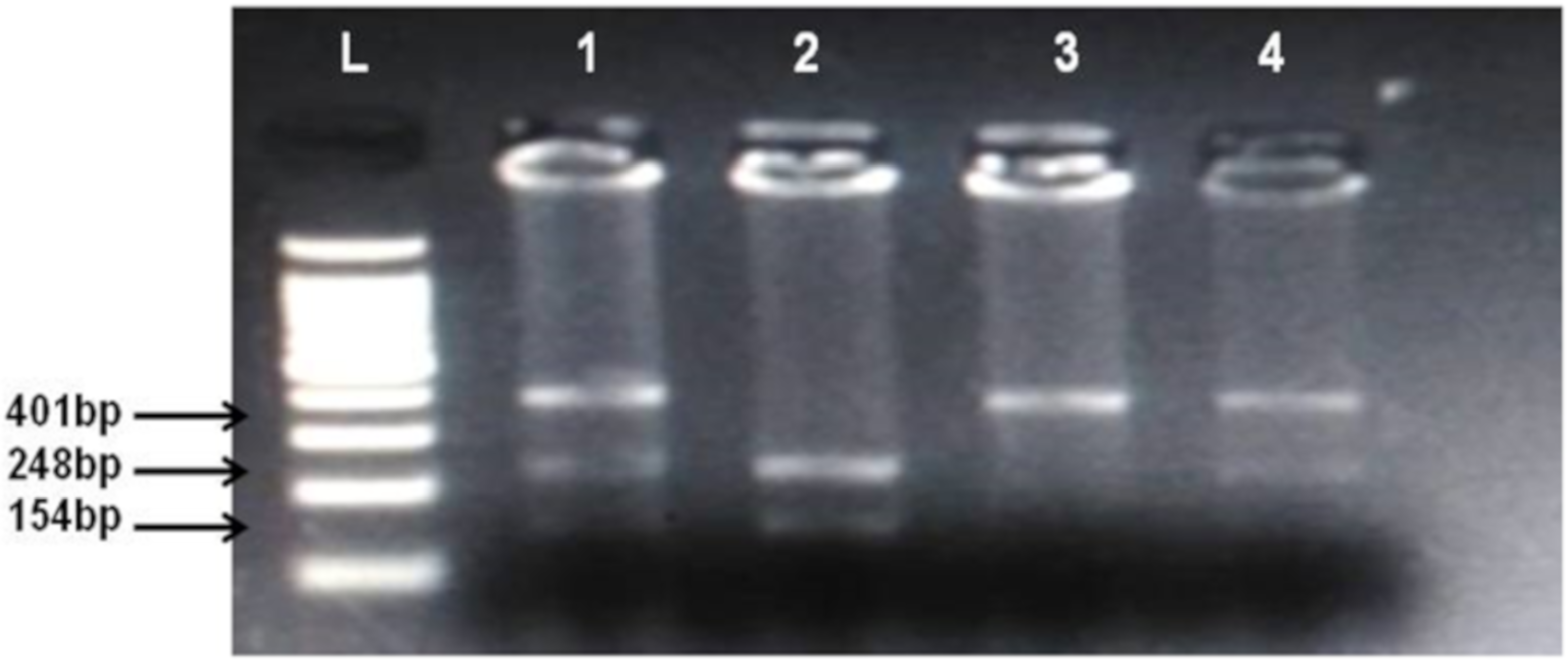
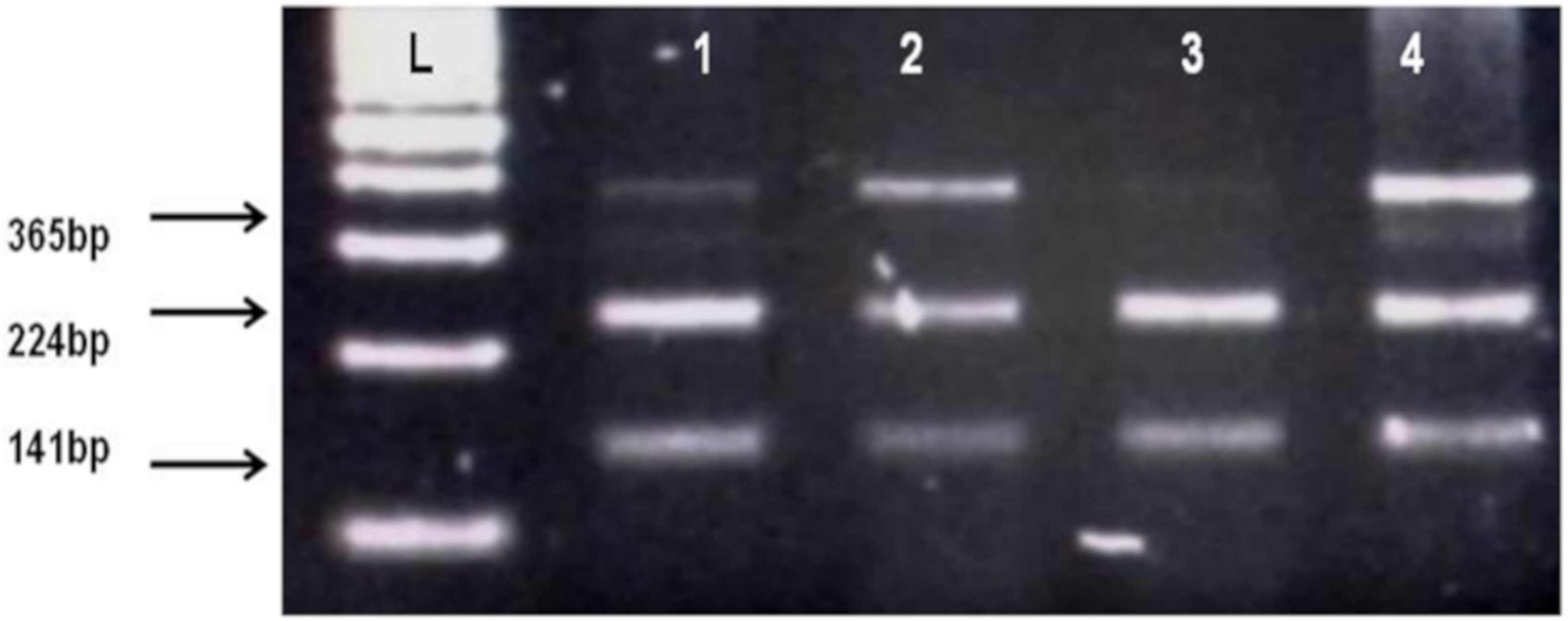
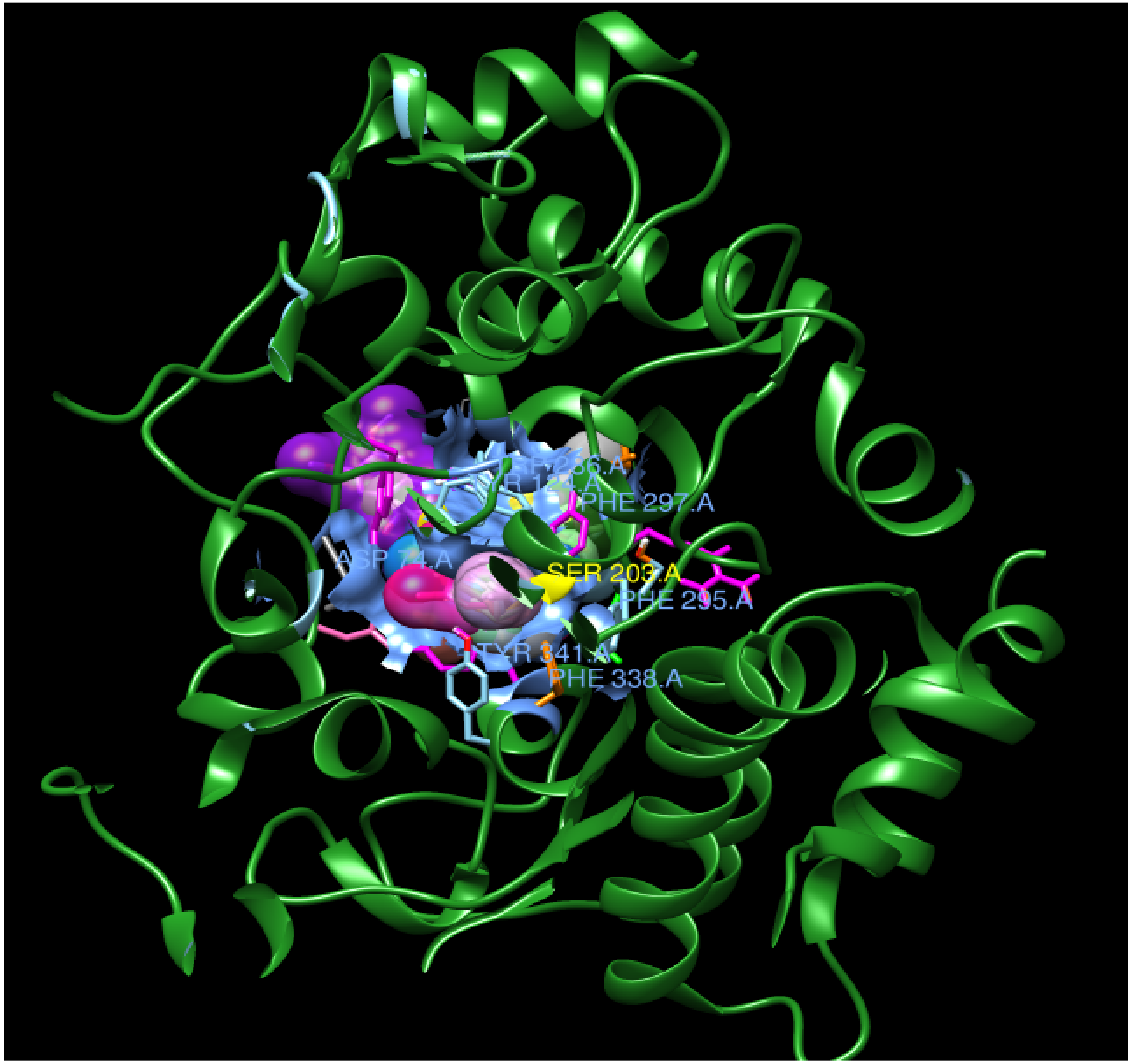
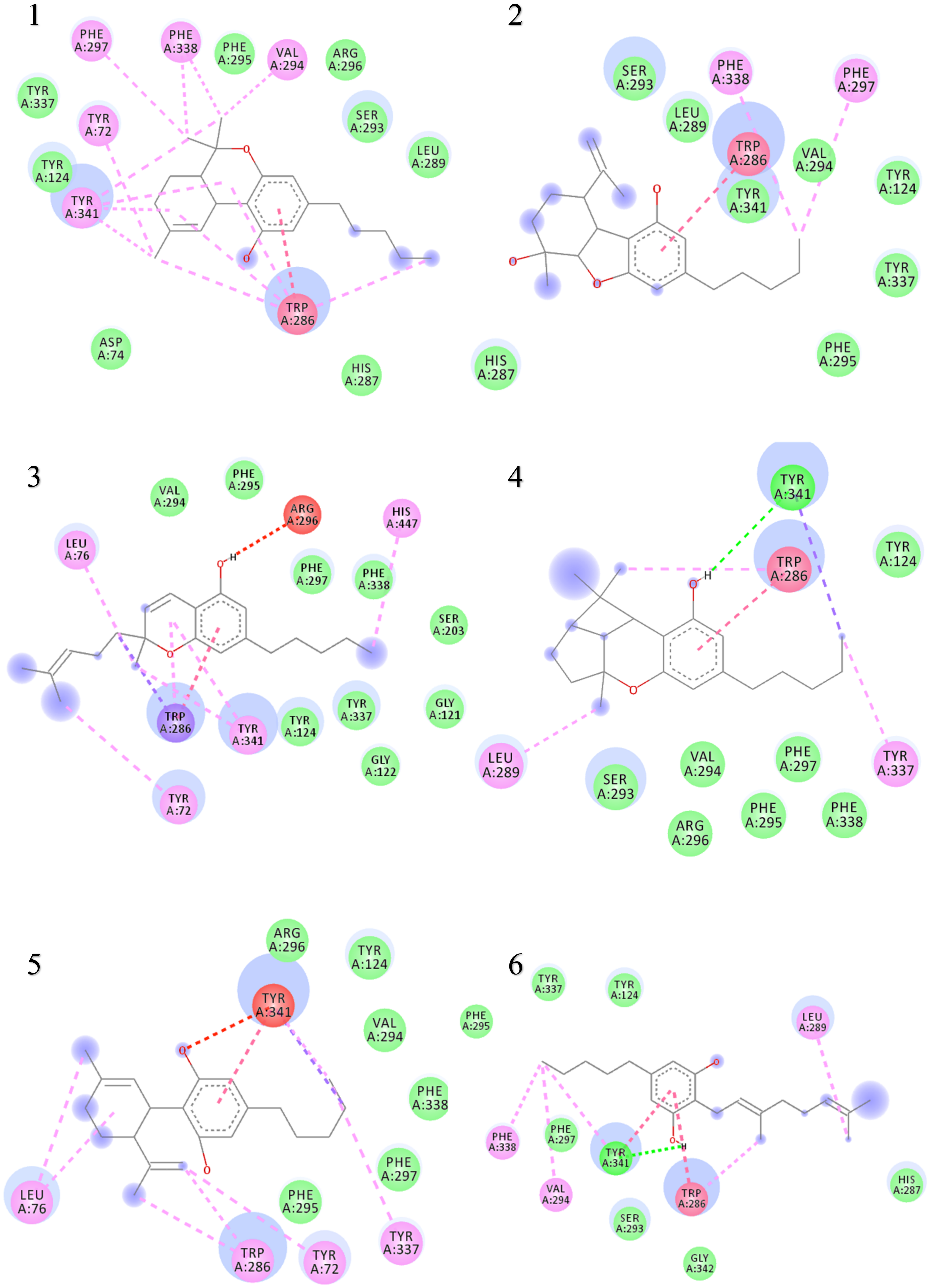
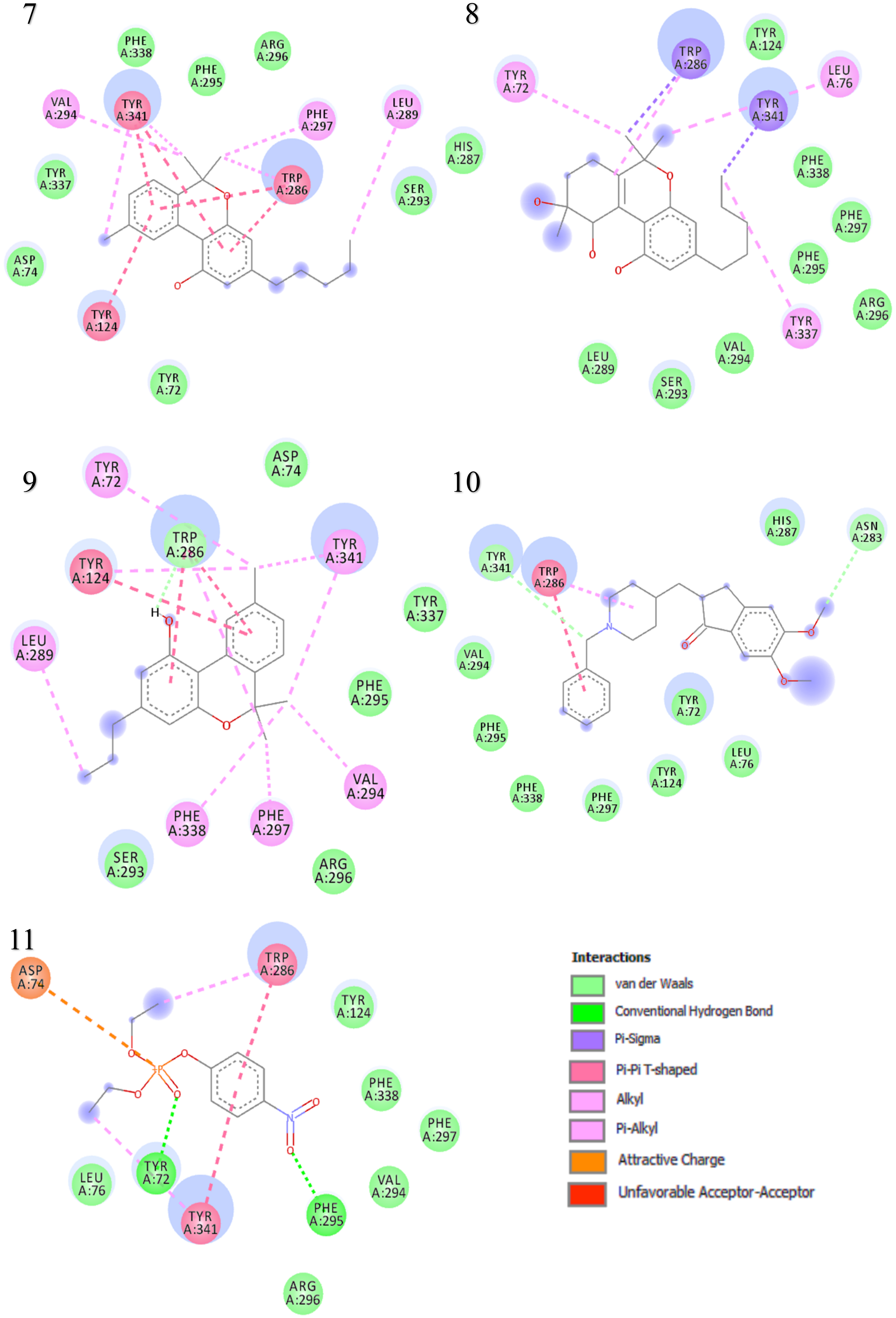
| Catalytic Triad | Acyl Pocket | Peripheral Anionic Site | Phosphyl Site | |
|---|---|---|---|---|
| Acetylcholinesterase (4PQE) | Ser-203 Glu-334 His-447 | Phe297 Phe338 Phe295 Trp286 | Ser125 Tyr341 Asp74 Tyr124 Trp286 Tyr237 Glu285 | Val294 Ser293 Trp286 Tyr72 Ser294 Tyr337 |
| Center (Å) | Dimensions (Å) | ||
|---|---|---|---|
| X | –27.5501 | X | 65.5753 |
| Y | –0.2162 | Y | 62.4444 |
| Z | 50.3675 | Z | 57.9704 |
| Primer’s ID | Primer’s Sequences | Tm | Product Size |
|---|---|---|---|
| rs806368 | |||
| CNR1-SNP1 F | 5′GCAACGATGTTACCAGCTCAAC3′ | 62.0 C | |
| CNR1-SNP1 R | 5′ATTGTCTTGCACTGGCCTTCTG3′ | 63.8 C | 401 bp |
| rs17228602 | |||
| ACHE-SNP2 F | 5′GAGGAGGAGAAAAGAATGACC3′ | 56.9 C | |
| ACHE-SNP2 R | 5′TCCTCTAATGAGTGGTCGGAC3′ | 59.2 C | 365 bp |
| Reagents (Total Volume = 25 µL) | Quantity of Reagents for rs806368 (µL) | Quantity of Reagents for rs17228602 (µL) |
|---|---|---|
| Taq Buffer | 2.5 (1 X) | 2.5 (1 X) |
| MgCl2 | 3.0 (1.5 mM) | 3.0 (1.5 mM) |
| dNTPs | 0.5(2.5 mM) | 0.5 (2.5 mM) |
| Primers | F = 0.5 (10 pmol) R = 0.5 (10 pmol) | F = 0.5 (10 pmol) R = 0.5 (10 pmol) |
| PCR water | 14.5 | 14.5 |
| DNA sample | 3.0 (25 ng/uL) | 3.0 (30 ng/uL) |
| Taq polymerase | 0.5 (5 units) | 0.5 (5 units) |
| Thermal Profile | ||
| Denaturation | 95 °C for 5 min 95 °C for 30 sec | 95 °C for 5 min 95 °C for 30 sec |
| Annealing | 57 °C for 30 sec | 56.5 °C for 30 sec |
| Extension | 72 °C for 1 min 72 °C for 7 min | 72 °C for 45 sec 72 °C for 7 min |
| Total cycles | 35 X | 35 X |
| Ligand Name | Free Binding Energy (Kcal/mol) | Hydrogen Bonding | π-π Interactions | Van der Waals Interactions | |
|---|---|---|---|---|---|
| Interacting Residues | Bond Distance (Ǻ) | ||||
| THC | −9.3 | No H bond | N/A | Trp286 | Tyr337, Tyr124, Asp74, His 287, Leu289, Ser293, Arg296, Phe295 |
| Cannabielsoin | −7.7 | No H bond | N/A | Trp286 | Ser293, Leu289, His287, Phe295, Tyr337, Tyr124, Tyr341, Val294 |
| Cannabichromene | −7.6 | No H bond | N/A | N/A | Val294, Phe295, Phe297, Phe338, Ser203, Gly121, Tyr124, Tyr337, Gly122 |
| Cannabicyclol | −8.1 | TYR 341 | 3.51 | Trp286 | Tyr124, Ser293, Phe297, Phe338, Phe295, Val294, Arg296 |
| Cannabidiol | −7.5 | No H bond | N/A | N/A | Arg296, Tyr124, Val294, Phe338, Phe297, Phe295 |
| Cannabigerol | −7.0 | TYR 341 | 4.73 | Trp286 | Phe295, Tyr124, Tyr337, Phe297, Ser293, Gly342, His287 |
| Cannabinol | −8.6 | No H bond | N/A | Tyr341, Tyr124, Trp286 | Arg296, Phe295, Phe338, Tyr337, Asp74, Tyr72, Ser293 |
| Cannabitriol | −7.9 | No H bond | N/A | N/A | His287, Tyr124, Phe338, Phe297, Phe295, Arg296, Val294, Ser293, Leu289 |
| Cannabivarin | −8.6 | No H bond | N/A | Tyr124 | Asp74, Tyr337, Phe295, Arg296, Ser293 |
| Donepezil | −8.3 | No H bond | N/A | Trp286 | His287, Tyr72, Leu76, Tyr124, Phe297, Phe338, Phe295, Val 294 |
| Paraoxon | −6.1 | TYR72 PHE 295 | 5.58 5.36 | Trp286 Tyr341 | Leu76, Arg296, Val294, Phe297, Phe338, Tyr124 |
| Chemical Name | logP | Chemical Structure |
|---|---|---|
| Δ9-Tetrahydrocannabinol (THC) Mol. Weight = 314.5 g/mol | 7.26 | 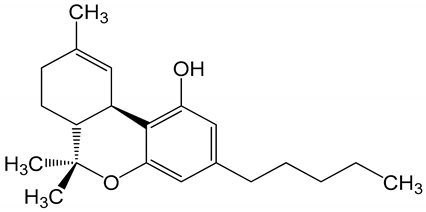 |
| Cannabinol (CBN) Mol. Weight = 310.4 g/mol | 5.58 | 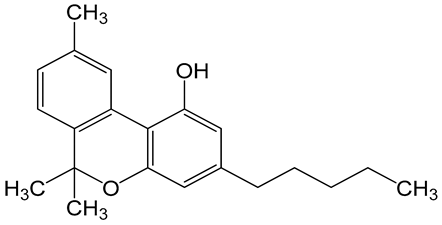 |
| Cannabidiol (CBD) Mol. Weight = 314.5 g/mol | 7.75 | 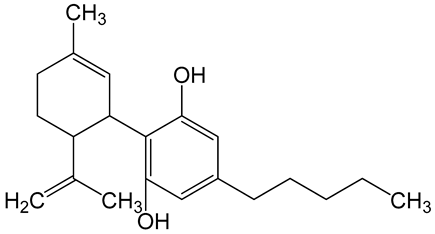 |
| Cannabicyclol (CBL) Mol. Weight = 314.5 g/mol | 4.96 | 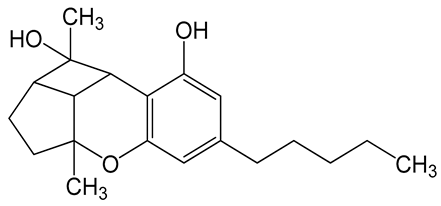 |
| Cannabitriol (CBT) Mol. Weight = 346.5 g/mol | 8.04 | 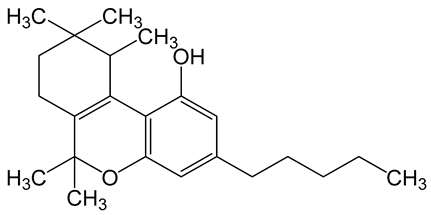 |
| Cannabielsoin (CBE) Mol. Weight = 330.5 g/mol | 7.64 | 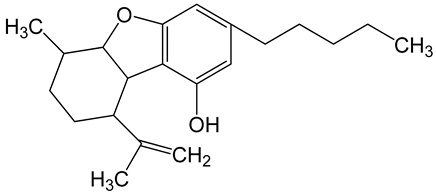 |
| Cannabigerol (CBG) Mol. Weight = 316.5 g/mol | 8.59 |  |
| Cannabichromene (CBC) Mol. Weight = 314.5 g/mol | 8.28 | 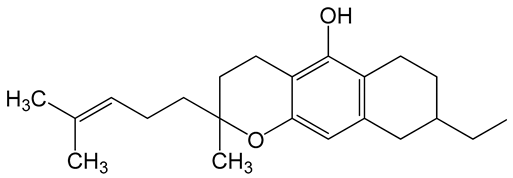 |
| Cannabivarin (CBDV) Mol. Weight = 282.4 g/mol | 6.98 | 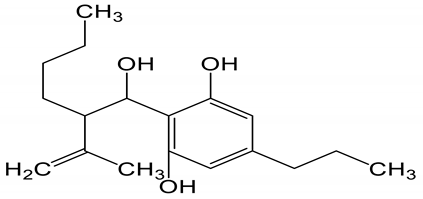 |
| Paraoxon Mol. Weight = 275.19 g/mol | 2.07 |  |
| Donepezil Mol. Weight = 379.5 g/mol | 3.39 | 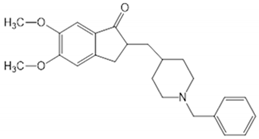 |
| Groups | Mean (µmol/L/min) | SD | SE | 95% Confidence Interval for Mean | |
|---|---|---|---|---|---|
| Lower Bound | Upper Bound | ||||
| Non-addicted | 0.016 (n = 31) | 0.011 | 0.002 | 0.011 | 0.020 |
| Cannabis addicted | 0.016 (n = 41) | 0.003 | 0.001 | 0.014 | 0.017 |
| Genotype | Cannabis Addicts N = 40 (%) | Non-Addicts n = 40 (%) | Odd Ratio (95% CI) p-Value | χ2 (p-Value) Significant ≥ 0.05 |
|---|---|---|---|---|
| TT | 18 (45) | 21 (52.5) | 2.872 (0.2379) | |
| TC | 22 (55) | 17 (42.5) | ||
| CC | 0 (0%) | 02 (5) | ||
| Dominant model | 18/22 | 21/19 | 0.740 (0.307–1.784) (0.502) | 0.450 (0.502) |
| Allele | ||||
| T | 58/80 (72.50) | 59/80 (73.75) | 0.938 (0.466–1.888) (0.858) | 0.0318 (0.8585) |
| C | 22/80 (27.50) | 21/80 (26.25) | ||
| Cannabis Addicts n = 49 (%) | Non-Addicts N = 49(%) | Odd Ratio (95% CI) p-Value | χ2 (p-Value) Significant ≥ 0.05 | |
|---|---|---|---|---|
| CC | 36 (73.47) | 31 (63.27) | 1.180 (0.277) | |
| CT | 13 (26.53) | 18 (36.73) | ||
| TT | 0 (0%) | 0 (0%) | ||
| Dominant model | 36/13 | 31/18 | 0.623 (0.263–1.470) (0.277) | 1.180 (0.277) |
| Allele | ||||
| C | 85/98 (86.73) | 80/98 (81.63) | 1.471 (0.677–3.197) 0.327 | 0.958 (0.328) |
| T | 13/98 (13.27) | 18/98 (18.37) | ||
| Cannabis Addicts n = 49 (%) | Non-Addicts N = 49(%) | Odd ratio (95% CI) p-value | χ2 (p-value) significant ≥ 0.05 | |
| CC | 36 (73.47) | 31 (63.27) | 1.180 (0.277) | |
| CT | 13 (26.53) | 18 (36.73) | ||
| TT | 0 (0%) | 0 (0%) | ||
| Dominant model | 36/13 | 31/18 | 0.623 (0.263–1.470) (0.277) | 1.180 (0.277) |
| Allele | ||||
| C | 85/98 (86.73) | 80/98 (81.63) | 1.471 (0.677–3.197) 0.327 | 0.958 (0.328) |
| T | 13/98 (13.27) | 18/98 (18.37) | ||
© 2020 by the authors. Licensee MDPI, Basel, Switzerland. This article is an open access article distributed under the terms and conditions of the Creative Commons Attribution (CC BY) license (http://creativecommons.org/licenses/by/4.0/).
Share and Cite
Furqan, T.; Batool, S.; Habib, R.; Shah, M.; Kalasz, H.; Darvas, F.; Kuca, K.; Nepovimova, E.; Batool, S.; Nurulain, S.M. Cannabis Constituents and Acetylcholinesterase Interaction: Molecular Docking, In Vitro Studies and Association with CNR1 rs806368 and ACHE rs17228602. Biomolecules 2020, 10, 758. https://doi.org/10.3390/biom10050758
Furqan T, Batool S, Habib R, Shah M, Kalasz H, Darvas F, Kuca K, Nepovimova E, Batool S, Nurulain SM. Cannabis Constituents and Acetylcholinesterase Interaction: Molecular Docking, In Vitro Studies and Association with CNR1 rs806368 and ACHE rs17228602. Biomolecules. 2020; 10(5):758. https://doi.org/10.3390/biom10050758
Chicago/Turabian StyleFurqan, Tiyyaba, Sidra Batool, Rabia Habib, Mamoona Shah, Huba Kalasz, Ferenc Darvas, Kamil Kuca, Eugenie Nepovimova, Sajida Batool, and Syed M Nurulain. 2020. "Cannabis Constituents and Acetylcholinesterase Interaction: Molecular Docking, In Vitro Studies and Association with CNR1 rs806368 and ACHE rs17228602" Biomolecules 10, no. 5: 758. https://doi.org/10.3390/biom10050758
APA StyleFurqan, T., Batool, S., Habib, R., Shah, M., Kalasz, H., Darvas, F., Kuca, K., Nepovimova, E., Batool, S., & Nurulain, S. M. (2020). Cannabis Constituents and Acetylcholinesterase Interaction: Molecular Docking, In Vitro Studies and Association with CNR1 rs806368 and ACHE rs17228602. Biomolecules, 10(5), 758. https://doi.org/10.3390/biom10050758







